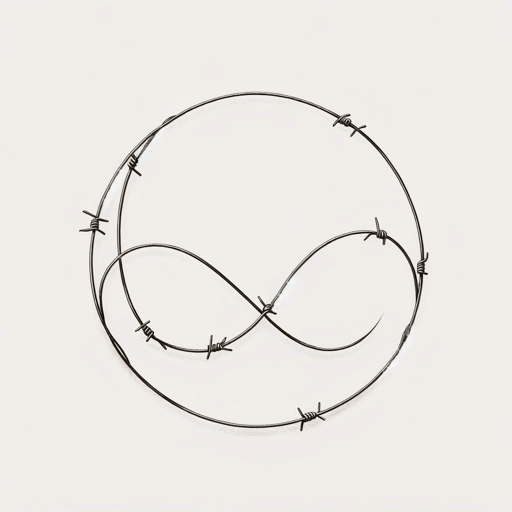52 pages • 1 hour read
Nadine GordimerOnce Upon a Time
Fiction | Short Story | Adult | Published in 1989A modern alternative to SparkNotes and CliffsNotes, SuperSummary offers high-quality Study Guides with detailed chapter summaries and analysis of major themes, characters, and more. For select classroom titles, we also provide Teaching Guides with discussion and quiz questions to prompt student engagement.
Summary and Study Guide
Summary: “Once Upon a Time”
South African author Nadine Gordimer (1923-2014) published the short story “Once Upon a Time” in 1989 while South Africa was still under apartheid, an institutionalized system of racism that from 1948 until 1994 discriminated against all people who were not white. Gordimer was the daughter of Jewish immigrants. Though not an Afrikaner (a South African descended from 17th-century Dutch colonizers), Gordimer was white and therefore part of South Africa’s ruling minority. Gordimer wrote about characters from all racial and ethnic backgrounds, considering their humanity first and their politics second. Many of Gordimer’s works deal with the themes of racism, morality, and injustice, and her characters must often make difficult decisions within a segregated society. She was an anti-apartheid activist and won the Nobel Prize for literature in 1991, just as South African apartheid was coming to an end. This guide uses the text of “Once Upon a Time” published in the American literary journal Salmagundi, no. 81 (Winter 1989), pp. 67-73, available on JSTOR.
“Once Upon a Time” opens with an unnamed narrator telling her story in the first-person present tense. She is a novelist, and someone has contacted her and asked her to write a children’s story for an anthology. When she declines, the person responds that every novelist should write at least one story for children. The narrator does not believe this is true and does not pursue the project.
The narrator switches to the first-person past tense when she recalls an event from the previous night. A sound somewhere in the house awakens her. She is anxious and wonders if it is the footsteps of a burglar. She does not have home security, such as barred windows or a gun for protection. Her fear heightens as she recalls a woman in her neighborhood who was murdered recently “in broad daylight” and an old man whose guard dogs were strangled “before he was knifed by a casual labourer he had dismissed without pay” (68).
Soon she realizes that the sounds she heard are caused by the house shifting on its foundation. It was built over a gold mine where rocks were excavated to create tunnels. When these rocks fall, 3,000 miles below the house, the ground above shifts and the house’s foundation creaks.
The narrator is relieved that there is no intruder, but she cannot fall asleep. Instead, she tells herself a bedtime story about a family that lives in an unnamed suburb. Here she switches to third person past tense narration.
In her story, a husband and wife love each other. They have a son, a dog, a cat, a trustworthy maid, and an itinerant gardener. They have taken precautions to protect their home and family by joining the Neighborhood Watch, which has given them a sign to ward off would-be intruders. The sign says, “YOU HAVE BEEN WARNED.” The narrator notes that a figure illustrated on the plaque wears a mask, so one cannot tell if he is Black or white.
Meanwhile, “people of another colour,” as the narrator calls them, are rioting in the townships outside the city (69). The husband tells the wife they have nothing to fear because the people from the townships can only enter the suburbs if they are domestic workers with reliable references. The wife is still afraid, so the husband fits their gate with an electronic intercom. The son finds the intercom fascinating and uses it as a walkie-talkie when he plays with his friends.
Police have successfully repressed the riots in the townships, but the number of burglaries in the suburbs has increased. Recently, burglars tied up a neighbor’s housemaid while the neighbors were away. Frightened by the thought of this happening to her, the family’s housemaid asks the husband to install bars on the windows. The husband acquiesces and also has an alarm system installed in the house. The cat sets off the alarm when it climbs in the boy’s bedroom window. Many other alarm systems in the neighborhood are set off by pets too; soon, people grow accustomed to the sound of the alarms. Burglars use the noise to their advantage, and the number of robberies in the neighborhood continues to increase.
After a time, unemployed people from the townships flood into the neighborhood. The wife wants the housemaid to bring them bread and tea, but the maid is afraid they will harm her. The husband’s mother, whom the narrator calls “the wise old witch,” gifts the family bricks for Christmas to build the wall around their home higher. The family is disturbed to see that the cat can jump over the seven-foot wall so easily, and they decide to take the next step and place sharp objects on top of the wall to prevent anyone from climbing over it. When they take their dog and their son with them on walks, they look at their neighbors’ walls and compare the different options: glass shards, spikes, and iron grilles.
The husband and wife decide on a security coil made of razor wire, which they consider the most frightening option. A company called “DRAGON’S TEETH” installs the coil along the top of the wall, and the wife marvels at how intimidating it looks. The narrator refers to it as “pure concentration camp style” (72). Once caught, there is no way someone can extricate themselves from the wire, because they will become entangled in the razors and coils.
One night, the mother reads the boy the fairy tale “Sleeping Beauty.” The next day, he pretends to be the prince braving the thicket of thorns to reach the castle and kiss the princess. He takes a ladder to the wall, climbs it, and soon becomes ensnared in the razor wire. The gardener and maid are the first to see him. They run out to the yard screaming, and the gardener tears up his hands trying to free the boy. The parents arrive and struggle to cut the boy’s body free of the security coils. Finally, all four adults carry the “bleeding mass” of the boy into the house (72).








Related Titles
By Nadine Gordimer







